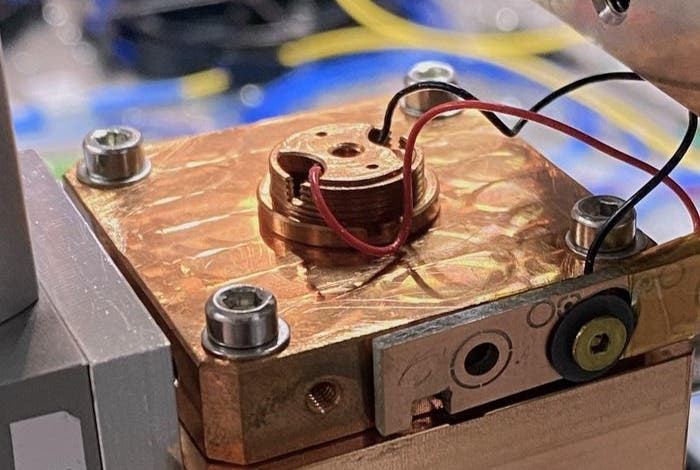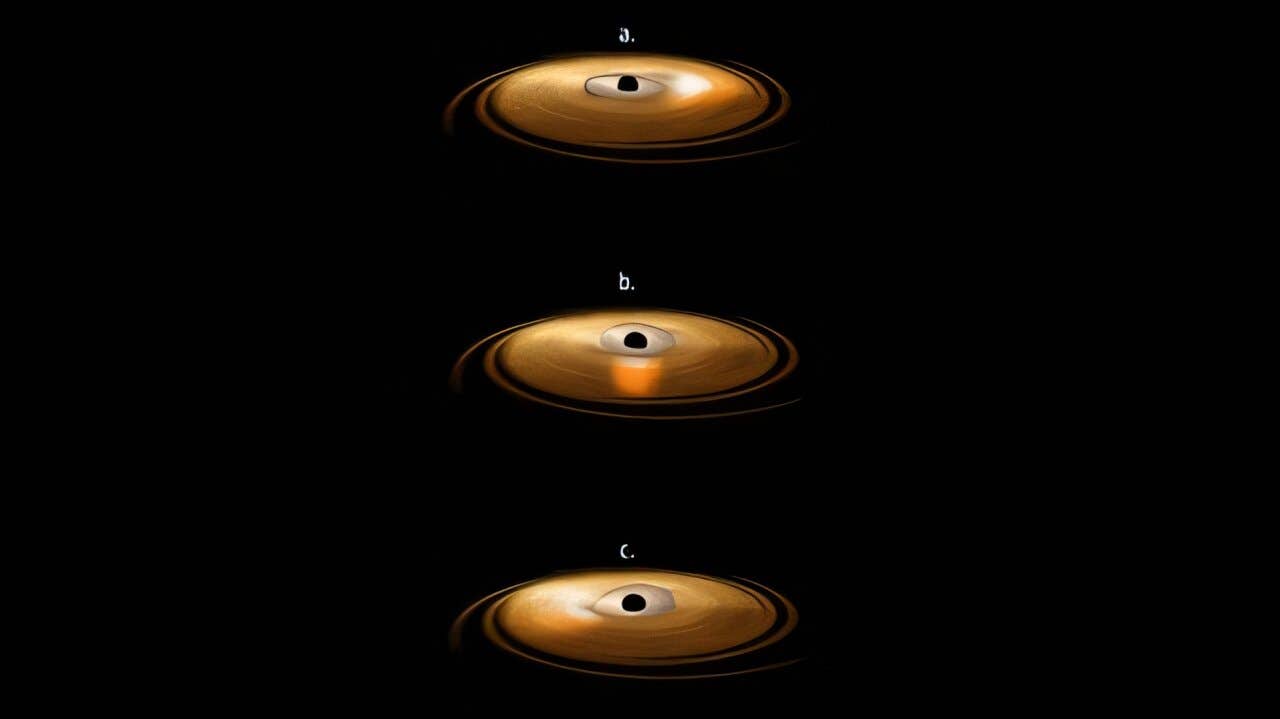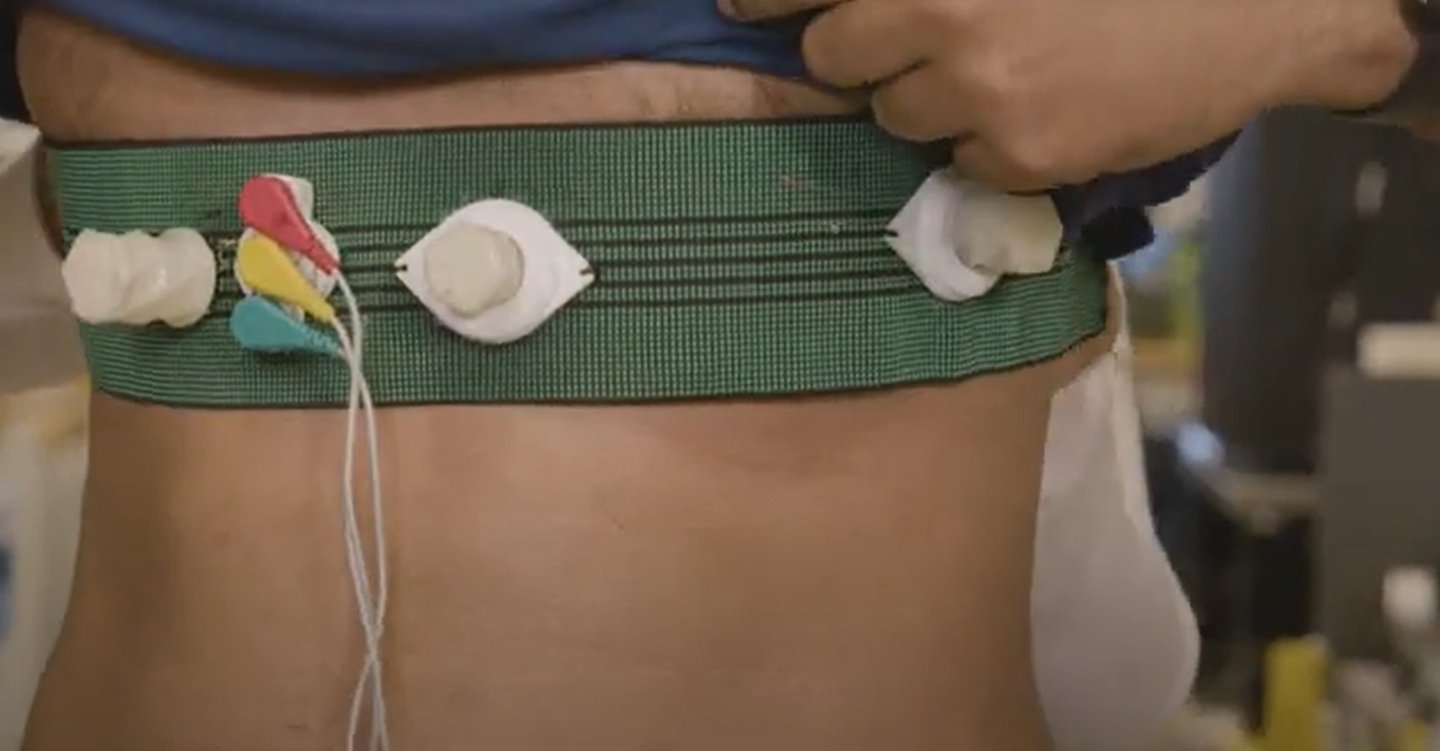Scientists developed a new way to create quantum memory using light and sound
The results demonstrate that mechanical memory for quantum data could be the strategy that paves the way for an ultra-secure internet.

Quantum memory, a cornerstone for future quantum internet and computing, has taken a significant leap forward with a groundbreaking development by researchers at the University of Copenhagen's Niels Bohr Institute.
Their innovative approach involves utilizing a small drum to store and transmit quantum data encoded in sonic vibrations, offering a promising pathway towards an ultra-secure internet with unprecedented speeds.
Located beneath Niels Bohr's historic office, the laboratory buzzes with activity, housing an array of advanced research projects focused on quantum technologies. Amidst the intricate setups of mirrors, lasers, and interconnected devices lies a tangible manifestation of quantum mechanics – the quantum drum.
Composed of a ceramic, glass-like material with strategically placed holes along its edges, this small membrane exhibits quantum behavior when stimulated by laser light, vibrating at speeds that defy classical physics.
The recent collaboration across various quantum disciplines at the Institute has unveiled the drum's potential role in revolutionizing quantum computing networks.
Through a novel process, researchers have succeeded in converting light signals emitted by quantum computers into sonic vibrations stored within the drum, establishing a new form of "quantum memory."
Related Stories
Published in a research article, their findings demonstrate the drum's ability to preserve fragile quantum states, laying the foundation for efficient transmission of quantum information over extended distances.
Lead author of the study, postdoc Mads Bjerregaard Kristensen, emphasizes the significance of their discovery, envisioning the drum as a fundamental component of future quantum networks. He highlights the crucial role of quantum memory in enabling secure and high-speed communication, essential for realizing the potential of quantum computing.
In conventional communication systems, signal degradation due to noise poses a significant challenge, particularly over long distances. Quantum networks face similar hurdles, aggravated by the inherent fragility of quantum states.
Kristensen proposes leveraging the quantum drum to overcome these obstacles, envisioning a network where quantum signals are received, amplified, and retransmitted without compromising their quantum integrity.
Unlike classical methods that rely on binary encoding, the quantum drum preserves data in its quantum form, harnessing properties like superposition and entanglement unique to quantum systems. This approach promises not only enhanced speeds but also heightened security, crucial for safeguarding sensitive information in the digital age.
Professor Albert Schliesser, co-author of the study, underscores the versatility and practicality of the quantum drum compared to alternative approaches involving atomic systems. By leveraging mechanical systems, researchers gain greater flexibility in design and adaptation, ensuring scalability as quantum technologies evolve.
Key advantages of the quantum drum include low signal loss, compatibility with a wide range of light frequencies, and the ability to store and retrieve data on demand. With a record-breaking memory time of 23 milliseconds already achieved, the drum holds promise as a cornerstone of future quantum networks and computing hardware.
While quantum computing and communication are still in their nascent stages, the researchers' pioneering work lays the groundwork for transformative advancements.
The prospect of employing the quantum drum as a form of quantum RAM – a temporary storage mechanism for quantum information – holds profound implications for the future of computing and communication technologies.
The development of quantum memory using the quantum drum represents a significant milestone in the quest for ultra-secure, high-speed communication networks. With its potential to revolutionize quantum computing and enable unprecedented levels of data security, this innovative approach heralds a new era of technological advancement with far-reaching implications for society.
Facts: How it works
Prior to the data-carrying light signal hitting the quantum drum membrane, an "auxiliary laser" ensures that the membrane's natural vibrations, which come from ambient conditions, are brought under control. This stabilizes the diaphragm with a drum beat that is at the exact frequency it likes best. This is called resonance.
The drum becomes very sensitive when it resonates with the auxiliary laser, which, among other things, allows it to detect the signal stored in the data-carrying light with quantum precision.
Once data-filled light hits, its signal becomes part of the drum's vibrations. Here, they can be stably preserved in a kind of sound memory prior to being sent onwards in a third laser, which is shot at the drum and mirrored out in a cable with data from the original light signal encoded.
Facts: Computers and quantum data
A classical computer works like a large network of switches that can be in either on or off positions. These systems are called binary because of the two states that form the basis of the calculations performed by the computer. Like beads on an abacus, the on and off switches form patterns of binary code.
A quantum computer performs calculations with the help of quantum mechanics, and exploits that its "quantum switches", or qubits, can be in quantum states, including superposition, where they are simultaneously on and off. This allows a quantum computer to rapidly manage large amounts of information in a way that classical computers cannot.
Quantum data transmitted via light signals can maintain its quantum state as long as it is sufficiently undisturbed. And, the Niels Bohr Institute's quantum drum can both receive and forward signals without disturbance.
Facts: Quantum-secured connections
The method involves sending qubits of quantum data in an ultra-short light signal: A couple of entangled photons can be used to create nearly unbreakable codes.
These types of connections also ensure that any attempt to hack access will be exposed, as quantum law says that whenever something is observed, it changes.
Facts: Superposition and entanglement
Nature's rulebook is different in the quantum mechanical world. In particular, two quantum states neutralize the limitations of the ordinary world, giving quantum computers incredible powers.
Superposition: In quantum mechanics, superposition allows a particle to be in multiple states at the same time until it is measured. For example, a quantum bit (qubit) can be both 0 and 1 at the same time until it is measured and collapses to a certain state. Qubits leverage superposition to perform multiple calculations at once.
Tangling: Einstein referred to it as "spooky action at a distance". The states of two or more entangled particles are closely related. A change in the state of a particle will instantly affect the state of the particles it is entangled with, regardless of distance. It is this property that makes it possible to create secure connections using codes that cannot be decoded without a tangled particle as a key.
The condition also opens up the possibility of developing quantum teleportation, where information can be transferred without any direct transfer of particles.
For more science news stories check out our New Innovations section at The Brighter Side of News.
Note: Materials provided above by The Brighter Side of News. Content may be edited for style and length.
Like these kind of feel good stories? Get the Brighter Side of News' newsletter.



